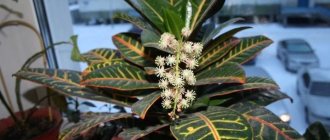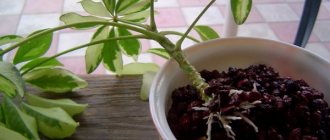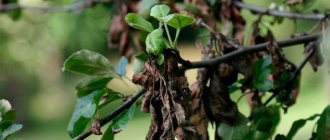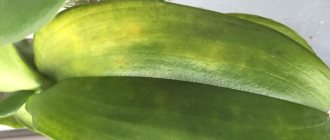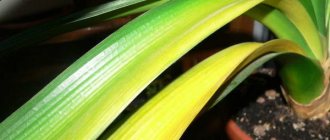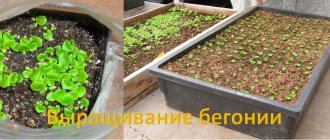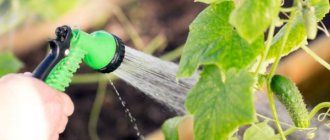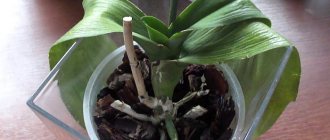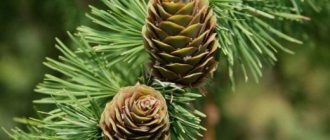Apple tree care in autumn: Cleaning
After the last apples ripen, you need to remove all the fruits from the branches, even those where it is very difficult to get them. Not a single apple should overwinter on the branches; scab and moniliosis will overwinter with it.
Preparing apple trees for winter begins with a thorough cleaning underneath them. To do it efficiently, carefully collect all the carrion and fallen leaves. Many fungi remain in fallen leaves, and in the spring the pathogens will be carried onto the branches by the wind.
Caterpillars and larvae of harmful insects also feel very comfortable there. The carrion is sorted. Something is suitable for processing or consumption, but not for storage.
Important! It is better to burn the leaves, especially if scab or moniliosis has been noticed. The resulting ash is a good fertilizer.
The need for leaf fall
With the onset of autumn, the green color of the leaves of fruit crops changes to yellow. Some of them turn red, others become red. The reason for this is the destruction of chlorophyll, which gives green color to foliage. The concentration of this substance in plant tissues is affected by the length of daylight hours. With the onset of autumn it decreases. The effect is enhanced by cooling and changes in humidity levels, since during the winter months the tree does not receive it in full.
If apple trees have not dropped their leaves for the winter, snow sticks to them. Then the likelihood of damage to the branches under the accumulated weight increases. In frosty weather, trees do not need leaves. They have already dried out and do not provide nutrients. On the contrary, the plant loses moisture through them. Then with the onset of spring it dries out.
On a note! Another factor that causes leaves to fall is the huge amount of toxic chemicals and minerals accumulated in them. Therefore, it is not recommended to burn fallen leaves, especially from apple trees growing along highways.
Trimming
Beginning gardeners often ask whether these trees are pruned in the fall. If you want to provide quality care for your apple tree in the fall, then the answer is categorical: pruning apple trees in the fall is necessary! But it is important to know how and when to prune them. After most of the leaves have fallen off, you can start pruning.
- Remove all dry branches, disease-damaged, broken, and those growing inside the crown.
- To prevent the development of fungal diseases, it is advisable to treat the cut site with diluted copper sulfate, taking a teaspoon of it per liter of water.
- After the cut has dried, it is carefully covered with garden varnish.
Attention! Pruning should not be carried out in rainy weather or in frosts exceeding -10°C.
Insulating tree trunks for the winter
And the last stage is protecting trees from winter cold and rodents. Wrapping the trunks in burlap or other similar breathable fabric will help with this. To secure the material, it must be tied to the trunk with twine or glued with tape. You need to wrap the trunk of the apple tree so that the lower part of the fabric remains on the ground (if the trunk has not been whitewashed), later it can be cut on the sides and sprinkled with earth. This is necessary to ensure that pests do not penetrate under the strapping material.
Also an important point in the autumn care of apple trees is sanitary pruning of trees. If you do everything correctly, your trees will calmly overwinter and next year will produce a good harvest of delicious, juicy apples.
How to water an apple tree in the fall
Preparing apple trees for winter includes autumn watering. Moisture-recharging autumn irrigation in temperate latitudes is usually carried out in early to mid-October, and in the southern regions the dates are shifted to November. For a very young tree, 2-3 water is enough, and they are watered earlier, at the end of August. An older tree will already need 5-6 buckets, and older garden residents will need 10-15 buckets.
Watering an apple tree in the fall can be extended over several days if the water is poorly absorbed into the soil, which is often observed on heavy loams. The main thing is that the soil is saturated to a depth of at least 60 cm, and preferably a meter. Autumn rains do not always wet the soil even by 10-15 cm.
On a note! Roots left without sufficient moisture do not absorb nutrients well, as a result of which the tree will come into winter weakened... ✍
In autumn, apple trees no longer waste their potential on fruits, so the growth of the root system is more active. To help them, you need to feed them with potassium and phosphorus fertilizers.
Rules for watering trees
It is important to remember that you not only need to water the tree regularly, but also do it correctly. First of all, you need to use settled warm water. If you take cold water directly from a well, this can lead to the development of various diseases in the plantings, which are difficult to treat.
It is recommended to water young pear seedlings up to the age of three into the holes from a bucket or watering can. But it is not recommended to use a hose with powerful water pressure for these purposes, as this will simply wash away the roots and damage the delicate root collar. Try to carefully pour water onto the root collar of the seedling, through which the moisture is quickly absorbed and enters the roots, trunk and young shoots. Usually, 20 liters of cold, settled water is enough to water a seedling.
Mature trees can be watered in a variety of ways. This is making grooves about 15-20 centimeters deep and abundantly moistening the tree trunk circle. Typically, an adult bucket requires about 50 liters of water.
Autumn watering is usually carried out after harvesting and complete fall of leaves. The gardener needs to remove fallen leaves, remove damaged branches, apply appropriate organic fertilizer and water the tree thoroughly. In some cases, if snow has not yet fallen in November and stable cold has not set in, so-called pre-winter watering is carried out, which can be extended for a week, pouring about two buckets of water under each tree daily or with a break of several days.
Advice. In late autumn, before the cold weather, it is not recommended to water the apple tree once and abundantly, since this can lead to increased growth of shoots, and the onset of cold weather will destroy such young branches. A tree that is not properly prepared for winter may die.
Fertilizing the apple tree in the fall
Autumn feeding of apple trees and all other fruit trees is good to combine with watering. Then the fertilizers will reach the roots much faster. Apple trees need to be fertilized in the fall with potassium and phosphorus. 1 tbsp. potassium sulfate and 2 tbsp. double superphosphate is stirred in 10 liters of water. If the tree is younger than 10 years old, then 1 bucket per square meter will be enough. For older trees you need twice as much.
Important! When feeding apple trees in the fall, nitrogen fertilizers are unacceptable! They will cause shoots to grow and weaken the tree. This fertilizer can even destroy a tree.
Leaf shedding products
You should start thinking about using the drugs in September, when the crown is green and there are no yellowed leaves, the shoots do not become lignified, and bud differentiation does not occur (the rudiments of inflorescences do not form). There are special products - defoliants, created on the basis of synthetic inhibitors and causing the shedding of leaves. They cannot be used for prevention - their use must be justified by necessity.
Reference!
The natural substance that activates leaf fall is synthesized by the plant itself - ethylene. Powerful natural growth inhibitors – coumarin, abscisic acid.
It is not recommended to use outdated products with a strong toxic effect - they give dangerous side effects to the plant in the form of marginal burns and damage to growth points. These include etafon, etrel, desitrel, etc. The least toxic are magnesium chlorate and sodium chlorate.
The action of defoliants is based on the fact that, once in leaf tissue, they help accelerate the aging process and destroy chlorophyll. As a result of processing, the foliage should begin to fly away. To achieve maximum effect, you need to treat with the product at the very beginning of the natural aging process - early use reduces effectiveness.
How to treat against pests and diseases: Stripping the bark
Preparing apple trees for winter in the fall requires attention to the bark. Many pests and pathogens overwinter under the old bark, in cracks. Cleaning the bark will help make your garden healthier.
- Spread a cloth or paper under the tree; it should then be burned along with the larvae and eggs of pests that have fallen on it.
- Mosses and lichens can be carefully scraped off with a plastic or wooden tool. This will be easier to do if you first cover it with a mixture of slaked lime and clay, diluted with water to the consistency of thick sour cream.
- After the mixture dries, the moss is removed more easily, and the bark is less damaged. Damaged bark is covered with garden pitch.
Interesting on the topic: Why do apples rot right on the tree, and what to do: Fruit rot - Moniliosis
Examine the bark carefully. The lagging behind should be removed; pests have probably settled down for the winter under it. To ensure your apple tree care in the fall is complete, don’t be lazy and inspect the branches. Aphids lay eggs near the buds. They look like small black dots. They are carefully scraped off. At the bottom of the trunk you can see clutches of caterpillars or their pupae, resembling felt. Be sure to remove them.
☝ After stripping the bark, treat the entire trunk with a 3% solution of iron sulfate (300 g per bucket of water). You can also take copper sulfate in the same concentration.
If the fruits have been severely damaged by scab or fungal rot, treating apple trees in the fall against diseases and pests with a urea solution at the rate of 0.5 kg per 10 liters of water will give good results. Although it is a nitrogen fertilizer, it will not cause harm if the treatment is carried out 2 weeks before stable frosts after the end of leaf fall.
The apple tree did not shed its leaves - possible causes, consequences
Timely yellowing leaves indicate that the growth processes have ended, the bark of young shoots has matured and the tree is ready for winter. If the leaves of the apple tree have not fallen off, then there is a reason for this and it needs to be identified in order to begin treatment.
Foliage remaining on a fruit tree is not the norm for most varieties, and with proper care and compliance with the rules of agricultural technology, this should not happen. Its fall is not a one-time process, and differs in timing for different varieties - in Antonovka vulgaris, for example, it remains on the branches and persists until spring. If in late autumn the leaf is green, firmly attached to the branch, the shoots are weakened and grassy, then this indicates disturbances occurring in the tissues of the tree.
Preparing apple trees for winter: Autumn whitewashing
You can often see gardeners bleaching trunks in the spring. Apart from aesthetic pleasure, such whitewashing gives nothing, because its main purpose —
protect the bark from sunburn and cracking in frosty weather.
You need to take care of your apple tree in the fall .
Another purpose of whitewashing is
protection from pests, so copper sulfate is often added to the whitewash mixture. For 10 liters of water take 2.6 kg of lime, 0.6 kg of vitriol and 250 g of carpentry or casein glue.
Interesting! When preparing young apple trees for winter, lime is partially replaced with chalk, and glue with milk. Whitewashing is carried out in dry weather from the bottom up to the first fork of the branches.
Leaves fall - tree's defensive reaction
Trees look different in each season of the year. This is due to the presence of chlorophyll in the leaf blades. In spring and summer there is a lot of it, so the process of photosynthesis occurs actively due to the long daylight hours. And closer to autumn, the amount of water in chloroplasts decreases, the process of photosynthesis becomes impossible and chlorophyll is destroyed. The leaves become yellow or purple in color. And the presence of cork fabric at the base makes them fragile. That is why a light wind can easily tear off the leaves, and they begin to fall in the fall.
Leaf fall is the plant’s protection from moisture loss. Water is simply necessary for the tree to survive the winter. The evaporation process in some plants occurs more slowly, so the leaves do not fall until winter. This is facilitated by essential oils or the presence of a mucous substance that fills special passages in the veins. Gardeners note that leaf fall is a biologically necessary process for the development and growth of perennial plants.
Digging
When the fallen leaves have already been collected and the trunks have been whitened, it’s time to thoroughly dig up the tree trunk circle. Otherwise, your preparation of apple trees for winter will not be complete. After all, it is in the surface layer of soil that the larvae of all kinds of pests settle down for the winter. And if you leave everything as it is and do not properly care for the apple tree in the fall, then next season you will have to spend a lot of effort fighting these uninvited “guests.” In order to destroy the cozy shelters that pests have acquired in the ground, it must be dug up.
Advice! The digging depth is no more than 15 cm, so as not to accidentally damage the roots. Outside the crown you can dig with a spade bayonet... ✍
Methods of watering apple trees
Let's talk in more detail about what methods exist for watering trees in the garden. To date, the following methods have become widespread:
Subsoil irrigation
It allows you to provide moisture access directly to the root system. In this case, you can use special pipes and hoses that are laid in the ground.
Drip irrigation
The drip irrigation method is used when the soil on the site is of poor quality. The use of this technology allows moisture to be supplied pointwise to the area of the root collar and the entire root system. Liquid fertilizers can be added to the water, and the fertile soil itself, laid in the tree trunk circle, is not washed away by water.
Sprinkling
Sprinkling is the simplest method of irrigation, which allows you to ensure the necessary uniform moisture of the soil. Watering can be done using a hose to which a pump is connected. This method of irrigation is often used by beginning gardeners. In this case, water must be taken not from the well directly, but from a settling tank, where cold water from the well will heat up to the ambient temperature. It is best to carry out such sprinkling after sunset and use warm, settled water for these purposes.
Mulching
Apple trees will overwinter much better if the soil under them is mulched with a layer of 5 cm. You can use humus, compost, peat, sawdust, bark and pine needles.
It should be taken into account that peat and sawdust acidify the soil. It is better to take black peat, it is less acidic than brown.
But sawdust and bark are not the best solution. By spring they cake and mold.
Interesting on the topic: What to do with carrion or how to turn Waste into Income
